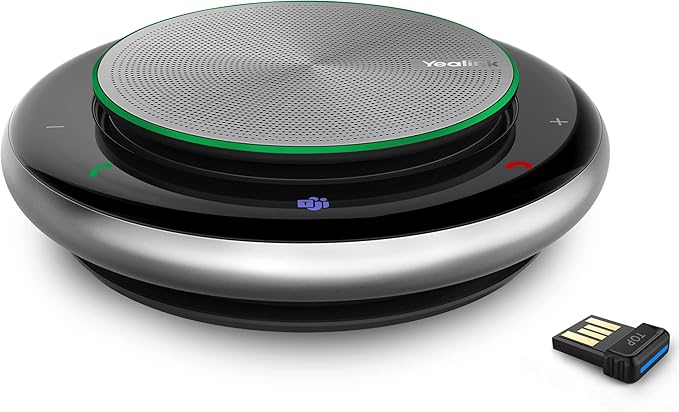I. What is an Omnidirectional Microphone?
An omnidirectional microphone is a versatile conference phone product. It can conduct high-quality internet conference calls through a computer interface and can also be used for wireless mobile phone conferences via the headset interface, functioning as both a speaker and a microphone.
II. Functions of an Omnidirectional Microphone
- Computer network conference calls.
- Wireless mobile phone conferences.
- Music playback and recording.
III. Why Use Omnidirectional Microphones for Video Conferencing?
The shortcomings of traditional microphones have led to the rise of omnidirectional microphones as the preferred choice for video conference audio collection.
- Omnidirectional Range: Omnidirectional microphones have a much larger sound collection range compared to traditional microphones. This reduces the number of microphones needed in a video conference, simplifying the system’s wiring.
- Anti-Echo and Howling: While traditional pickups can cover large areas, they often suffer from severe echo and howling due to the expansion circuit. A qualified omnidirectional microphone has built-in anti-echo and anti-howling functions, providing a significant advantage.
- Simplicity: Omnidirectional microphones typically feature audio input and output functions, and some even have built-in speakers. This reduces the amount of hardware needed for video conferencing, making the system more convenient.
IV. Differences Between Omnidirectional and Unidirectional Microphones
- Pickup Range:
- Unidirectional microphones have a small pickup radius (about 30 cm), ideal for single-person use.
- Omnidirectional microphones have a larger pickup radius (1-5 meters), suitable for multiple people.
- Sensitivity:
- Unidirectional microphones have limited sensitivity, preventing interference from other devices, making them ideal for individual use.
- Omnidirectional microphones have high sensitivity, picking up more ambient noise, which can affect sound quality but is suitable for group use.
- Local Amplification:
- Unidirectional microphones usually support local amplification.
- Omnidirectional microphones generally do not support local amplification.
V. Key Points for Purchasing an Omnidirectional Microphone
- Purpose: Determine the intended use (e.g., singing, live broadcasting) as different microphones have different effects.
- Compatibility: Ensure the microphone is compatible with your device (e.g., mobile phone, computer).
- Wireless vs. Wired: Choose based on your preference for mobility and convenience.
- Type: Decide between dynamic microphones (better sound quality) and electret microphones (more durable).
- Physical Store Purchase: Prefer physical stores for easy auditioning and warranty services. Ensure clear, noise-free sound during testing.
- Workmanship: Check for any flaws in the microphone’s workmanship, as it can affect performance.
VI. Recommended Omnidirectional Microphone Brands
- Sennheiser
- Audio-Technica
- Love Technology
- Sony
- Shure
- Somic
- Victory
VII. Installation and Operation of an Omnidirectional Microphone
- Connect the IN/OUT of the omnidirectional microphone to the input of the video conference system or mixer. Use the dedicated lines to connect the pink line to the output and the green line to the input.
- Open the UM microphone test and display the mobile phone icon to indicate the microphone is on.
- For TV-61R omnidirectional microphones, connect the interface marked with [mobile phone] and use the provided audio cable. Connect the pink port to the speaker amplifier and press UM on the panel to turn on the microphone volume.
- Confirm the microphone is on by checking the mobile phone icon on the UM microphone test.
VIII. Common Troubleshooting for Omnidirectional Microphones
- Pickup Distance: Ensure the microphone is used within its 3-meter radius for optimal sound clarity.
- Performance Variations: Adjust settings as needed to improve meeting efficiency and audio quality.
- Echo or Noise Issues: Disable some audio processing functions of the PC and video conferencing software, reduce pickup volume, and adjust speaker volume.
- Connectivity Problems: Check connections or try a different USB port, preferably on the back of a desktop computer for better stability.

